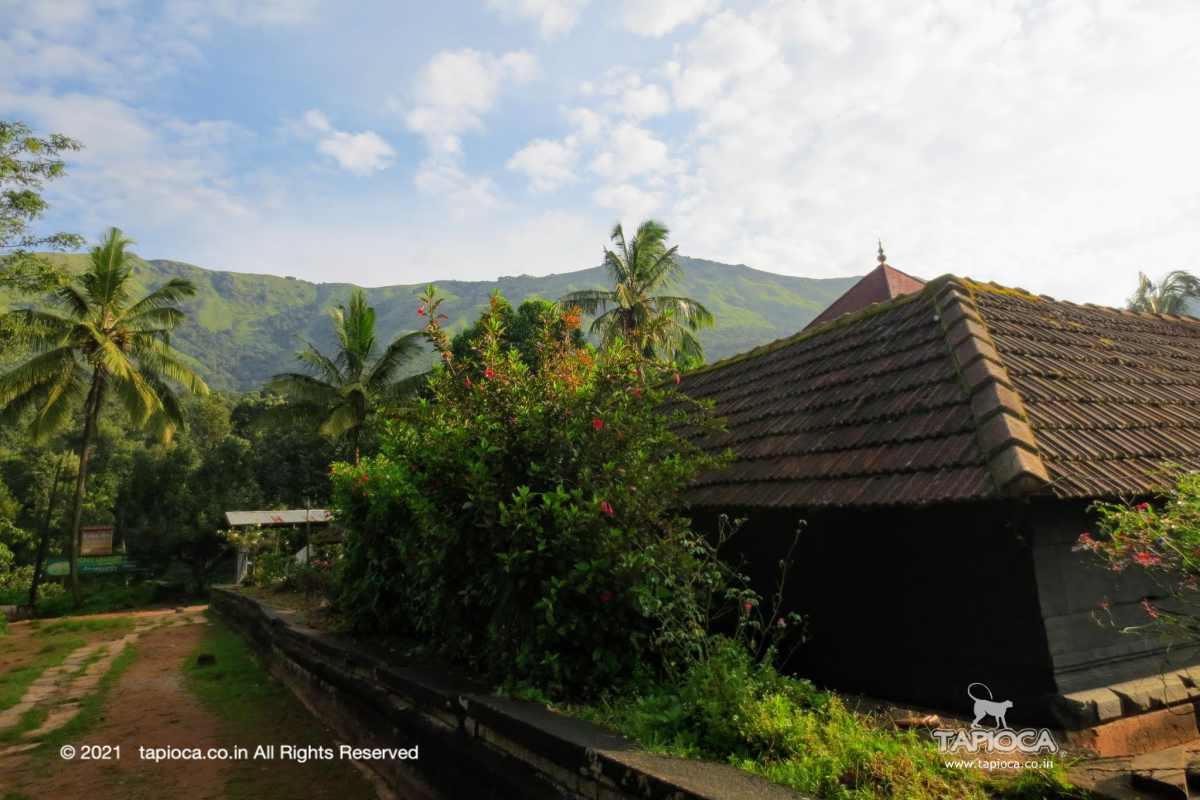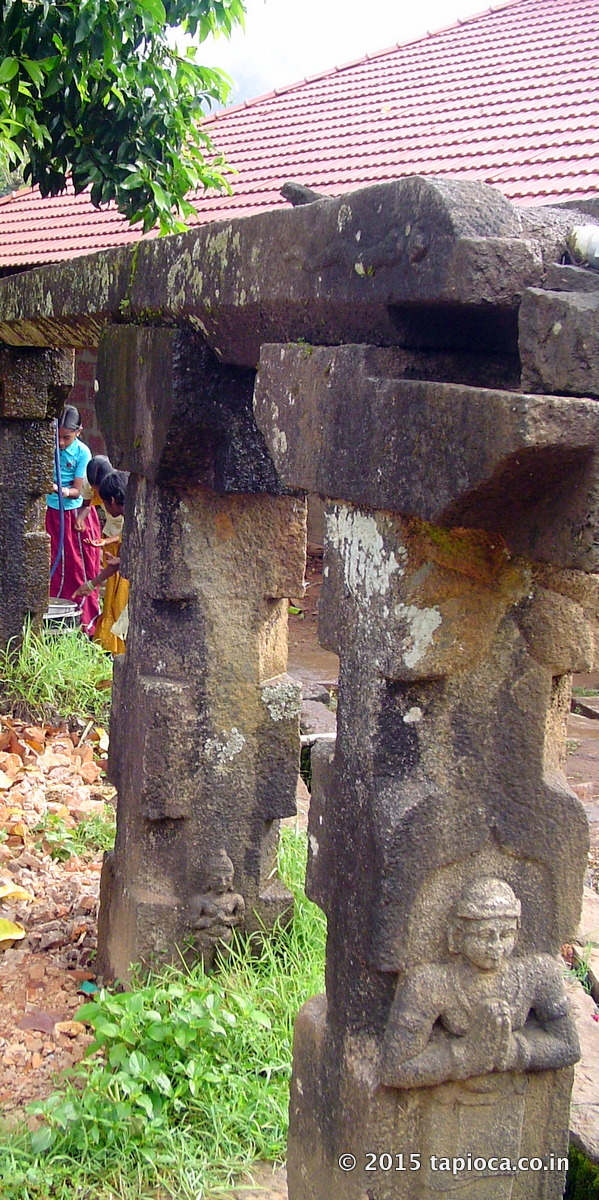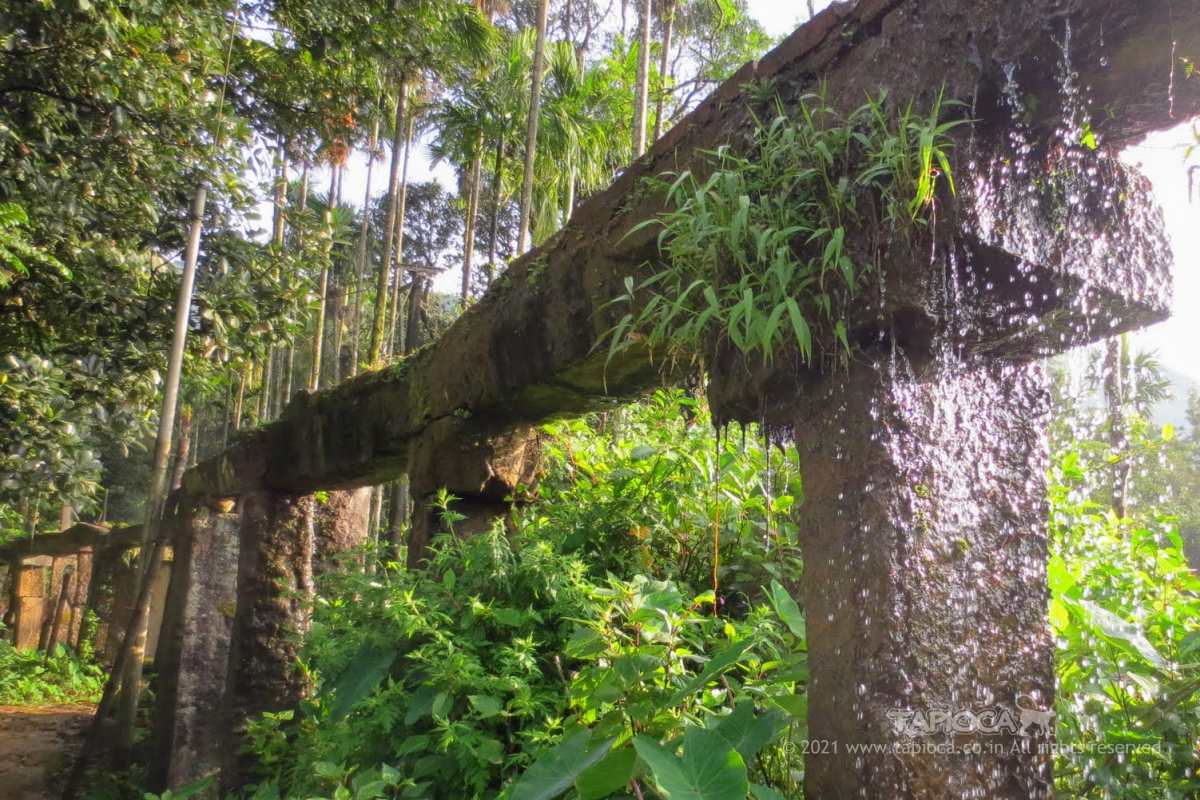Thirunelli Temple

Wayanad
Thirunelli Temple with Brahmagiri Mountain in the north.
T
he temple is located on to of a hill that is surrounded by mountain ranges all around. In other words the temple sits hidden in the middle of a secluded forest . The temple faces east where sun rises over the Udayagiri range. At the north is the formidable Brahmagiri Range which appears so close to the temple. You can see the trees and the undulating grass slops of Brahmagiri from the temple compound. At the west and south are Karimala and Narinirangimala respectively.Though there are no authentic details available, the temple could be well over a thousand years old. On stylistic ground this looks as a typical Kerala temple. The inner sanctorum is surrounded by a tile roofed structure. And there's an open courtyard around the sanctorum. At the east , in front of the entrance is a granite lamppost. Curiously enough the flag post is absent , though one can spot a hole on the floor where it ought to be.
Along the outer wall of the temple is a cloister made of granite pillars cut in cubical style. This part of the temple architecture is slightly unusual for a Kerala temple. And it seems the cloister work was never completed. There are many theories behind the uncompleted part of the temple. A fight ( kind of ego clash ) between two rulers seems to be the more convincing one. One (a local chieftain from the nearby Coorg) tried to add the cloister , while the king of the area was not impressed with this and ordered to stop the work. Anyway it still remains unfinished, centuries later.
On the northern side of the temple is an ancient stone aqueduct that still brings water to the temple. Hree again locals have a story to tell about its commissioning. A princesses visited the temple one. And there was no pooja ( offering to the god ) done on that day thanks to the dried-up streams nearby. The princesses wowed that she would not drink water until water is brough to the temple for the daily offerings. People went into the Brahmagiri and found a stream. Later she commissioned this aqueduct to bring uninterrupted water supply to the temple. Even till date , its just doing that , refreshingly cold mountain stream water just gush out of the aqueduct. The granite open channels are supported by pillars with interesting murals carved on it.
As mentioned earlier , the history part of the temple's origin is a bit hazy. Nothing much is known on who made this temple. At the best what is known is the association and stories connecting this temple s with various rulers. The temple is as old as 2000 years, or even more. But that ambiguity on history is easily compensated by the myths associated with the temple.
So who created this temple? None other than Brahma , the lord of creation.
While traveling on the earth he was attracted by the beauty of Brahmagiri ( hence the name) and decanted at Thirunelli. He saw a idol set on a Amla tree and identifies it as lord Vishnu. Brahma installed the idol with the help of gods from heaven. Impressed by this Lord Vishnu promised Brahma that the stream in the vicinity will wash away sins. This stream is thus called Papanasini ( the cleanser of sins). Amla or Indian gooseberry is called Nelli in Malayalam, thiru means sacred and hence the name Thirunelli.
As you walk from Thirunelly temple to Papanasini along the riverbank , somewhere midway on your left a small bridge appears. Cross this to go to a tiny shride called Gundika temple dedicated to lord Siva. Legend has it that a fruit ( again Nelli fruit ) plucked by a pilgrim has turned into a Shiva lings , as he was finishing bath in the Papanashini.
Now this is a rare confluence of all the three trinities of Hindu pantheon - Bhahma, Vishnu and Shiva- the creator , maintainer and destroyer respectively.
The rituals for the ancestors (pithr) start as early as 5 in the morning. Though it may continue all the day. But for some reasons it could be just from 5 to 9 in the morning. So if you are visiting Thirunelli for this ritual , reach there as early as possible or even chose to stay overnight at Thirunelli.
The ritual is done in batches. It start with a prayer in front of the temple. A priest recite the Sanskrit mantra. And them pilgrims collect the materials required from the rites from the counter. After this they head to the sacred pond called Papanasini located about half a kilometer into the forest. A paved trail first and a bit of scrambling though the boulders on the path takes one to the tiny pond. It's almost waist deep water. Now they take the first dip in the water before the actual ritual starts.
The water from the pond flows through a narrow boulder strewn riverlet. On the bank of it stands the priest who administer the ritual. Pilgrims lines in the riverlet with almost ankle-deep flowing water. The ritual material collected from the temple is place on the boulder in front and the priest directs and administer the rituals in sequence.
En route to Papanashini mentioned above is a sacred pond called Panchatirtha. In middle of it , on a boulder is the image of a footprint. This is called Vishnupada ( footprint of Lord Vishnu). Panchatirtha can be seen down from the northwest corner of the temple, while Papanashini is located further hidden in the forest.

Aqueduct at Thirunelli
The ancient aqueduct that brings water from the forest to the temple at Thirunelli.

Wayanad
Aqueduct at Thirunelli Temple

Wayanad
Devaswom Guest House Panchatheertham. Narinirangi mala (mountain in the shape of a stretched tiger), in the backdrop
